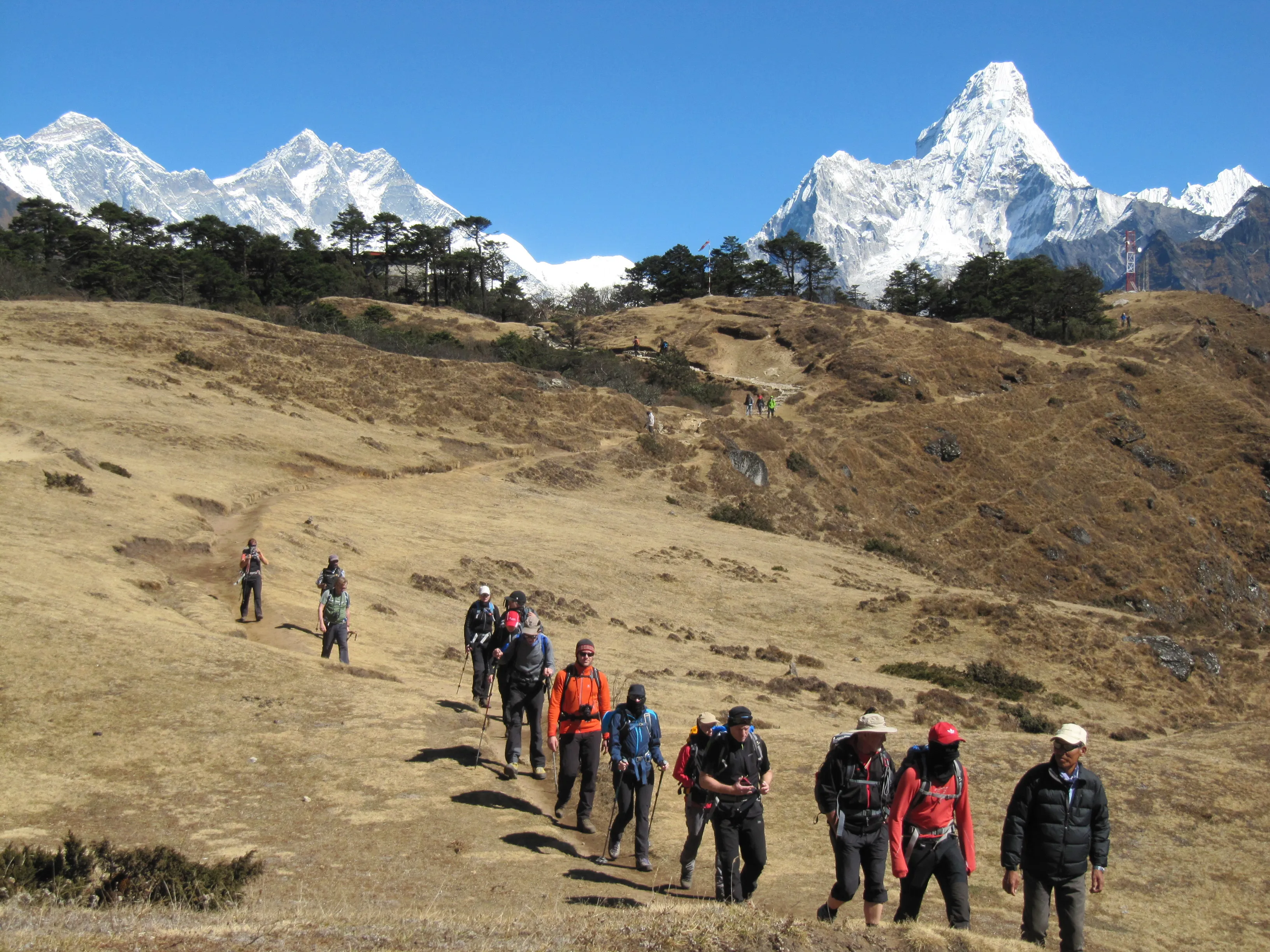Monsoon Trekking in Nepal -Top 5 Best Monsson Treks
Nepal is a country of hidden treasure, natural delicacy, cultural-geographical diversity, and architectural prolificacy. Trekking in the heavenly land of the Himalayas is a keen interest of the adventurous trekkers or mountain explorers across the globe. In recent years, the trend of Monsoon Trekking in Nepal has outnumbered all the past records. Normally, the best trekking seasons in Nepal are Spring (March to May) and Autumn (September to November) therefore many Trekking agencies in Nepal offer special trekking packages likewise. But trekking is possible even in Monsoon season and Mountain Mart Treks (MMT) offers special Monsoon packages for keen trekkers who want to experience unorthodox mythical and mystical Nepal.
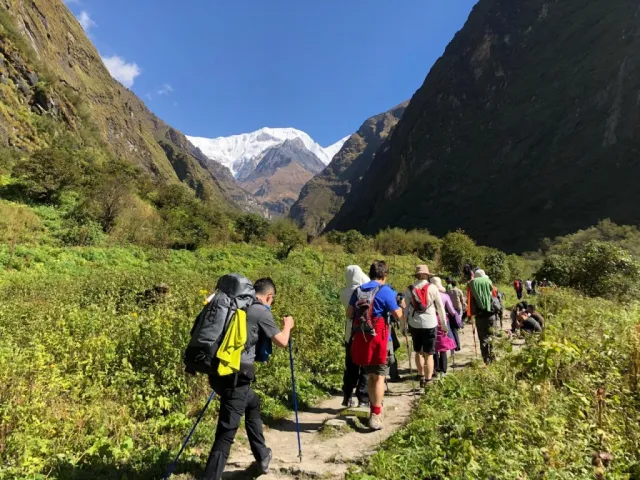
Nepal Trekking
Monsoon and its effects in Trekking:
Monsoon in Nepal generally falls from mid-June till early September. It often rains one-two hours or even a whole day resulting in complication in the day to day lifestyle. During this time, most of the trekking routes become muddy or slippery or get obstructed by a landslide. The constant rainfall, foggy weather and poor visibility obscure the trail or even delay or cancel the flight. One of the disturbing factors while trekking in lower forest area is bugs. Drizzling rain and jungle walk is a curse for the trekkers as mosquitoes, leeches or other bugs enter inside the boots or dress, suck blood and give itchy sensation. People Trek in the Himalayan region specially for a coruscating dazzling view of snow-capped mountain, cerulean landscape and beguiling nature but the monsoon ruins the momentum as clouds cover the sky and obscure the serene scenery of blue sky, snow-capped mountains and sunrise-sunset. Monsoon trek has much more excitement and surprises to offer to the trekkers. Trekking in Monsoon is a gamble which sometimes offers a majestic glimpse of the coruscating massif and sparkling sunrise view; sometimes force you to shelter the whole day in a room or on the way under a rock.
How is Trekking possible in Monsoon?
Monsoon is the blessing mainly for farmers and agrarian-based country; but for the travelers and trekkers, it is an absolute misfortune as they get imprisoned and stuck in one place and the fascinating view will be obscured.
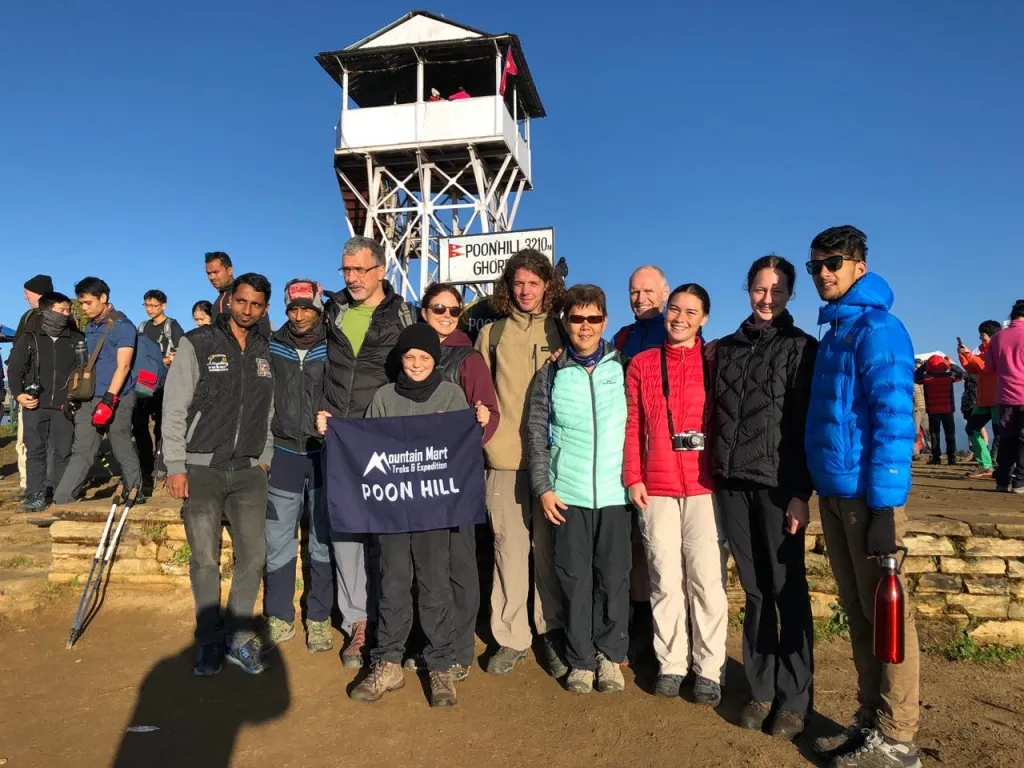
However, Trekking in Monsoon becomes easy, possible and pleasurable if you become judicious and follow some precautions:
- Breathable waterproof rain gear must be included in the gear list while trekking in monsoon. Also, carry a hands-free hiking umbrella, waterproof grip shoes, and quick-drying clothes.
- To get rid of leeches, mosquitoes or lower the risk of bugs, you can apply salt and tobacco mixture or use insect repellant inside your shoe, socks or on the exposed part of your body.
- 100% conscious is needed while walking along the streams, rivers, lakes, trails or over the ridge. Avoid the route if landslide has affected it badly and ask the help of local people or guides.
- During drizzling, downpour, lightning and Thundering, it is better to maintain a gap of 5-10 meters among trekkers so that one can help another if any misfortune happens.
- Poor visibility and the blocked trail can cause delays in flight or halt the trek, therefore, add Cushion Time in your vacation schedule.
Advantages of Trekking in Monsoon season:
“Everybody wants happiness, nobody wants pain, but you can’t have a rainbow without a little rain” – Unknown

Annapurna Base Camp Trekking in August
The Monsoon season is hibernating time of many animals as well as lots of trekkers; as a result, the trail remains less crowded, tranquil and calm. You can enjoy the trail, landscape, vista in relaxed way. The memorable experience one gains while trekking in monsoon is Earthy fragrance of soil or moss, Azure sky after rainfall at night.
In the Himalayas, valleys are in bloom with lush vegetation and beautiful moths. The clouds also run out of raindrop which apparently unveil the dazzling mountains and tranquil scenery. Mark the words: “Monsoon Trekking in Nepal is possible.”
Here is the list of Top Five Monsoon Trekking in Nepal:
Dolpo Region Trek:
The largest district Dolpa is still lagging behind in development due to land topography and improper vision or centralization policy of the government. Lurking behind the coruscating massifs like Dhaulagiri, Annapurna, and Himalayas, this region was isolated and unexposed to many enthusiastic trekkers and adventure lovers until 1989. Thanks to the continuous effort and appeal of the trekkers and Tourism Authority to make trek legalize in this region.
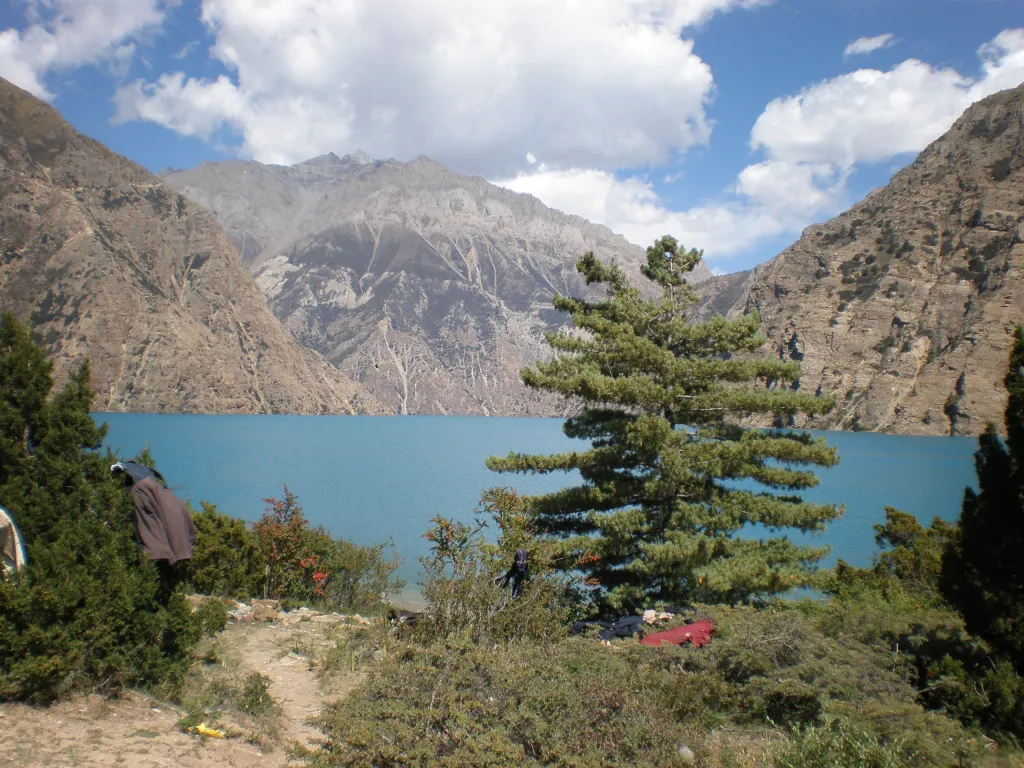
Shey Phoksundo Lake in Lower Dolpo Trek
Dolpo came into limelight only after Peter Matthiessen published his travel book ‘The Snow Leopard’ and Eric Valli’s movie: Himalaya (Caravan) got nominated in 72nd Oscar Award. Since then, the Tourism business in Dolpo region has been flourishing excessively. Nowadays, Dolpo Trek is one of the most demanding treks due to dazzling massifs, mountains, national parks, gompas, canyons, cliffs, turquoise lake, arid landscape, unspoiled nature, off-beaten trail, primitive tradition and many more.
The pristine nature, serene landscape tapestry, cultural-geographical diversity isn’t completely discovered yet by media and journalistic cameras; this is the reason why Dolpa is still renowned as Hidden Gem of the Himalayan region. Come and join the MMT team to unveil the mysterious and hidden land of the Himalayas: Dolpo.
Dolpo is situated over the rain shadow area and is the perfect destination for Monsoon Trekking. Upper Dolpo Trekking Itinerary, especially in Monsoon, offers one of the exquisite experiences to the trekkers. Trekkers can fly or travel by bus to reach Dolpa. It takes almost 20-24 hrs to travel on 4 wheelers from Kathmandu to Surkhet and seems impossible for international travelers. If you want to fly from Kathmandu then you have few options: Kathmandu-Nepalgunj-Juphal airport; Kathmandu-Nepalgunj-Jumla airport; Kathmandu-Pokhara-Jumla airport; Kathmandu-Nepalgunj-Tlacha airport. Juphal airstrip is the only airport that serves the entire Karnali Province and Dolpa district.
Dolpo has various trekking trails; Mustang in the east, Jumla in the South. But the Trek commences either from lower land Juphal-Dunai or Jumla to high elevated villages: Simen, Charkha, Komash, Sanu Bheri and Saldang through Shey Phoksundo National Park. The National Park is the largest and only trans-Himalayan national park in Nepal which has protected this region, as well as the large wildlife area of the Dolpo region. Trekking in Lower Dolpo through Shey Phoksundo National park, trekkers may encounter numerous wildlife including blue sheep, musk deer, Himalayan Thar and elusive snow leopard wandering over the cliff and hills.

Camping trek in Dolpo Region
The region is mainly divided into the outer (Lower) and inner (Upper) Dolpo which offers you to witness geographical, cultural and religious diversity along with serene natural beauty. Lower Dolpo Trek is moderate, semi strenuous and doesn’t need ultra fitness, Upper Dolpo Trek, on the other hand, is isolated, deserted, strenuous and demands special trekking permit card.
The trail from the lower region traces through the alpine forest along the surging Bheri River to the barren land of Upper Dolpo. While meandering through the ancient trading route of Dolpo, the trekkers sometimes get obstructed by yak caravans on the way. The lush green vegetation and agricultural field exemplify the people of this region heavily dependent upon agriculture and trade. If you trek during pre-monsoon season (June), you find the schools are closed and villages empty as most of the villagers ascend to high lands in search of Himalayan Viagra” Yarsagumba” (Cordyceps synesis) which is the main source of income of the people.
The turquoise Shey Phoksundo Lake amidst rocky hills seems exotic and tranquil from Tshowa Gompa, one of the oldest Gompas of the region just above the ridge of Shey Phoksund Lake. Dho Tarap (4,080m), the highest human settlement of the world nestling at the foothill of mountains inspire the trekkers to trek the upper Dolpo region. The trail to reach the upper region is challenging due to dry barren hills, cliffs and 4 passes en-route: Numa La (5190m), Bagal La (5,182m), Jenjila La (5,080m) and Kang La (5,270m). After dwelling in highest hamlet Dho Tarap and witnessing mesmerizing view of Phoksundo lake, Suligad Waterfall, the trail crosses through highest Kang La pass to reach Shey Gompa. The Gompa of this Upper Dolpa is famous for the Shey festival during which there will be a massive influx of Tibetan Buddhists in this Gompa for attaining enlightenment.
The reminiscence of the deepest lake: Shey Phoksundo; highest elevated human hamlet: Dho Tarap and sacred Shey Gompa enthrall trekkers throughout their lifetime. The remarkable dazzling views of peaks: Dhaulagiri (8,176m), Araniko Chuli (6,034m), Mukot Himal (6,639m) Putha Hiunchuli (7,249m), Kanjirobe (6,612m) are also the major attractions of Dolpo Trek.
One unique feature you will discover while trekking in this region is religious confluence. The pre-Buddhist- Bon religion was the oldest religion of this region but later on, the religion was transfused with Tibetan Buddhism then after the cultural hegemony of Buddhism has been spread throughout this region. In some lower regions, there is a practice of mix Hinduism and Buddhism. The numerous aesthetic Bon Monasteries and Buddhist shrines: Shey Gompa, Shel Sundo Gompa, Komache Gompa, Yangtsher Gompa, Samling Gompa, and some other fortified gompas disclose the architectural prolificacy and cultural delicacy of the region.
Everest Base Camp Trek
The world’s highest peak Mt. Everest is a brand ambassador of the Tourism business of Nepal which represents Nepal in the world. The land of the Himalayas is a prominent figure among the adventure lovers, travelers, mountaineers, keen botanists, geologists, and others. Trekking along the trail trodden earlier by the veteran mountaineers, explorers and trekkers is an opportunity to achieve the souvenir for a lifetime. This is why Everest Base Camp trek is one of the demanding treks these days.
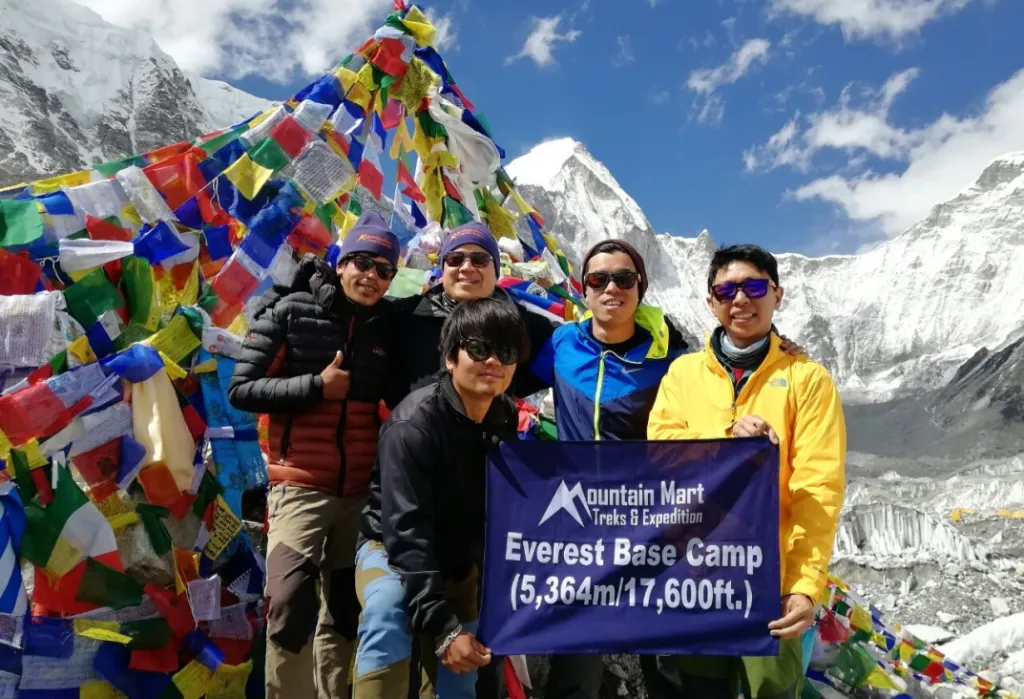
The trekking agencies in Nepal have tailored various packages under Everest Base Camp trek which offers the trekkers to experience adventurous escapades, cerulean landscape, bizarre climate, endangered wildlife, etc. One of the most fascinating reasons of EBC Trek is spectacular close up view of the world’s highest Mt. Everest along with a dazzling view of numerous snow-capped massifs or peaks, glacier, waterfall, icefall, aesthetic Gompas, chortens and few others en-route.
Everest Base Camp trek begins with a rollercoaster mountain flight from Kathmandu (TIA) to Lukla (Hillary airport). The airport is the highest elevated commercial airport in Nepal which serves the entire people of this region. Especially in Monsoon season, the flight from Kathmandu to Lukla or vice-versa get delayed or cancelled due to poor visibility and heavy downpour. The region also has a non-commercial airstrip, Syangboche airstrip which is situated at the highest elevation but doesn’t have scheduled services.
Lukla, the Gateway to Everest region is the transit point from where the trek commences and ends. The trials from Lukla trace down the footprints of Tenzing-Hillary through traditional Sherpa settlements: Phakding, Namche, Pangboche, Tengboche, Dingboche, Lobuche, Gorakshep, and few others. The lower villages get affected by rainfall during evening and night; but beyond Namche, there will be less rainfall as the upper land is protected by the rain shadow. Walking through the dense forest of Sagarmatha National Park in Monsoon is an unpleasant experience due to the dark-damp trail and risk of mosquitoes, leeches or bugs. But once you reach Namche, you never find rainfall boring or irritating; even-more, you get a chance to explore the tourist hub Namche Bazaar and enjoy the international cuisine and beverages. During acclimatization at Namche, the highest hotel of Nepal, Everest view hotel offers splendid view of Mt. Everest, Mt. Khumbila, Ama Dablam, Lhotse and Mt. Thamserku. The Everest view hotel is a prominent place for the breathtaking view of coruscating peaks and panoramic scenery too.
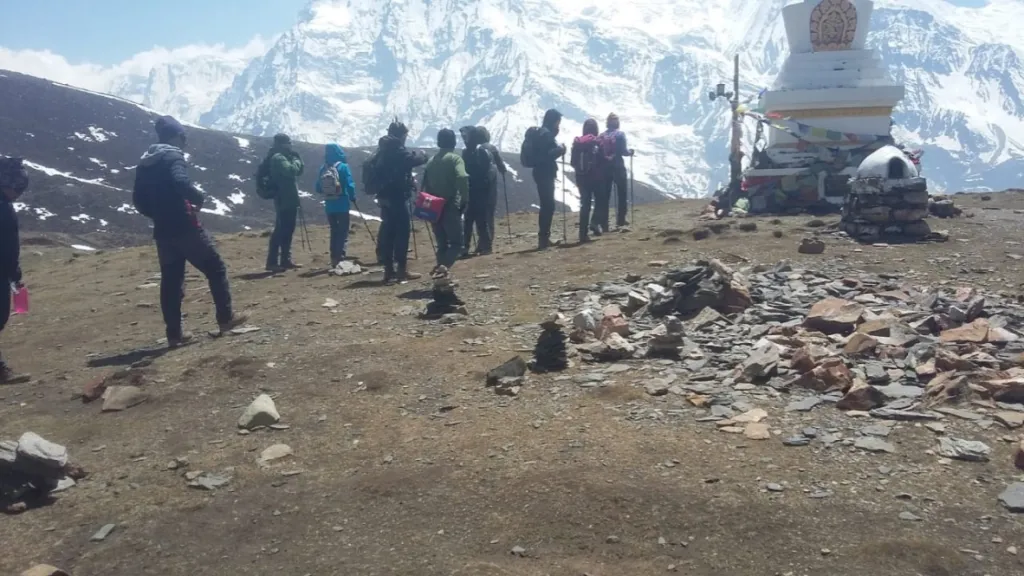
Monsoon is the season of sowing in most part of the country; but in Himalayan region, it is the season of family reunion and vacation as here will be less trekkers in EBC trail. The sacred villages Pangboche, Tengboche and Dingboche seem profound with the fragrance of incense sticks and hymn of “OM MANI PADME HUM”. The Tengboche Monastery amidst sparkling peaks like Toboche, Nuptse, Lhotse, Ama Dablam, Thamserku and Everest is one of the holy gompas of Everest region which is famous for the longest Mani Rimdu festival. Likewise, Pangboche Monastery also holds the religious supremacy. It is believed that there was once a scalp and hand of Yeti in the Gompa but now has replica only. The numerous Gompas, Chortans, prayer flags, Mani wheels, carved Mani boulders prove that the villages and villagers are heavily guided by Buddhism.
The last human settlement Gorakshep also has its own importance. In ancient time, the village was the original Everest Base Camp; however in the recent days, there are several lodges to offer cozy accommodation to the trekkers and mountain expedition teams. Gorakshep is a frozen lake bed where no vegetation is found; so, the village is also known as ‘dead raven’.

Trek to Everest Base Camp
Everest Base Camp looks quiet, tranquil and panoramic in Monsoon. The trail even remains peaceful due to less number of trekkers en-route. The walk from Gorakshep to EBC is the blessing to the trekkers which bestows the close-up vista of Khumbu icefall and Nuptse-Lhotse ridge above Base Camp. The major highlight of the trek after Everest Base Camp is a short hike to the Kala Pathar summit. Located at the foothill of Pumori, the peak can be easily ascended by anyone without prior experience. This peak is mainly popular for the spectacular view of the world’s highest Mt. Everest and 360-degree Himalayan Panorama from the peak. Even in Monsoon, the early morning hike to Kala Patthar blesses with the dazzling view of sunrise over the almighty Everest.
Under the National park law and Tourism act, trekkers and mountain expedition team must purchase Entrance card and National park permit card to get permission to trek on the Everest Base Camp trails. The Everest Trekking is protected under Sagarmatha National Park which is the highest National park in Nepal. The park provides the shelter to various wildlife, flora, and fauna. If you are lucky, the Himalayan Thar, Blue sheep, Snow leopard seem wandering along the cliff or hills.
To reach Everest Base Camp, one has to walk for 6-7 hours in broad daylight and demands average physical fitness. In Monsoon season, the trails get slippery and muddy which doubles the risk. Whatever the pros and cons of Monsoon, the EBC Trek always rejuvenates the soul of every adventure lovers.
Annapurna Circuit Trek:
Traveling in the Himalayas has become an epiphany to the adventurous mountain explorers across the world. The magnificent Annapurna region has become a popular trekking destination in Nepal since the pioneer legendary mountain explorer, Colonel Jimmy Roberts, officially introduced ‘Mountain Travel’ in the Kali Gandaki area in 1965.

Annapurna Circuit Trek is an adventurous trek beneath the world’s 7th highest peak Dhaulagiri (8,167m) and 10th highest Peak Annapurna I (8.091m). The region was declared as ‘The Annapurna Conservation area’ in 1992 which resembles paradise on Earth due to its aesthetic natural beauty, geographical diversity, cultural prosperity, ethnic lifestyle and amusing wildlife. All the trekkers have to secure the Entrance card or Permit card to enter the Annapurna region.
The trekking routes encircle the magnificent Annapurna massif and pass through the sub-tropical forest, terraced farmland, dense forest, rhododendron hills, incredible waterfall, daunting cliffs, glaciers, and traditional Sherpa villages: Dharapani, Chame, Manang, Jomsom, Kagbeni to the very dry and desert region. There are countless short as well as long trekking routes in Annapurna Trek. The trail commences either from Ghorepani Pokhara or from Jagat or Bulbule or Besisahar (Lamjung). The exact Annapurna Circuit Trek must follow the anti-clockwise direction that means from Besisahar to over the world’s highest Thorang La (5,416m) and descends down to one of the sacred temples Muktinath (Mustang) and the windy village Jomsom from where the final trail drops down to Tatopani, Ghorepani to the most beautiful tourist destination Pokhara.
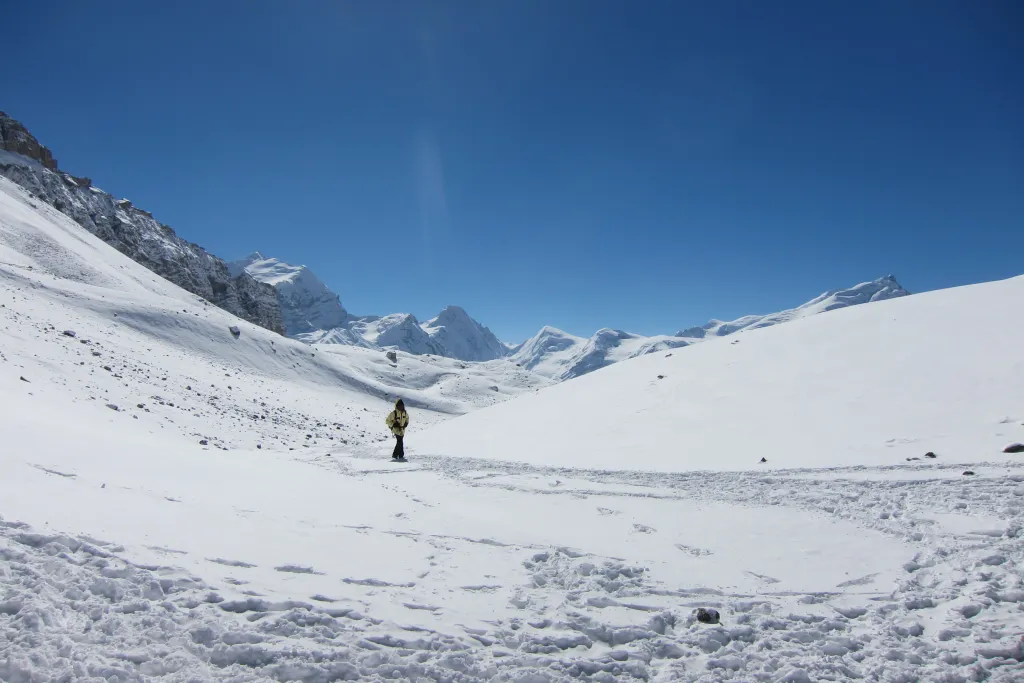
Annapurna Trekking
The Upper Mustang Trekking falls under the rain-shadow region which makes the trek safer and easier even in Monsoon. The Annapurna Circuit Trek is the most scenic journey which gives you an opportunity to view the gleaming world’s highest peaks from close range. Mt. Dhaulagiri (8,167m), Mt. Manaslu (8,163m), Annapurna I (8,091m), Annapurna III (7,555m), Gangapuram (7,455m), Annapurna South (7,219m), Machhapuchhre (6,997m), Lamjung Himal (6,931m) are some of the coruscating peaks which hypnotize coteries as well as solo trekkers trudging through these routes.

Thorong La Pass 5,416m/17, 770ft
Annapurna Region Trek has numerous packages under its belt which offer the world’s highest pass: Thorang La pass; the world’s deepest Kali Gandaki Gorge, Tilicho Lake, towering Annapurna, and Dhaulagiri massif and numerous peaks. The Annapurna Circuit trek itinerary specially offers abundant excitement, adventurous escapades, daunting cliffs which is not ruined by the monsoon.
4) Mustang Trek:
Mustang, the forbidden kingdom is over the rain shadow so this place is also called the desert in mountain. Mustang trek in monsoon is one of the best preferences of the trekkers due to less possibility of rainfall and zero leeches. The region was isolated from the outsider as intruders were restricted in this region until 1992. Trekking in the semi-autonomous and lost region of Nepal is a real privilege but it still demands a special trekking permit to experience the mysterious world in the wilderness.
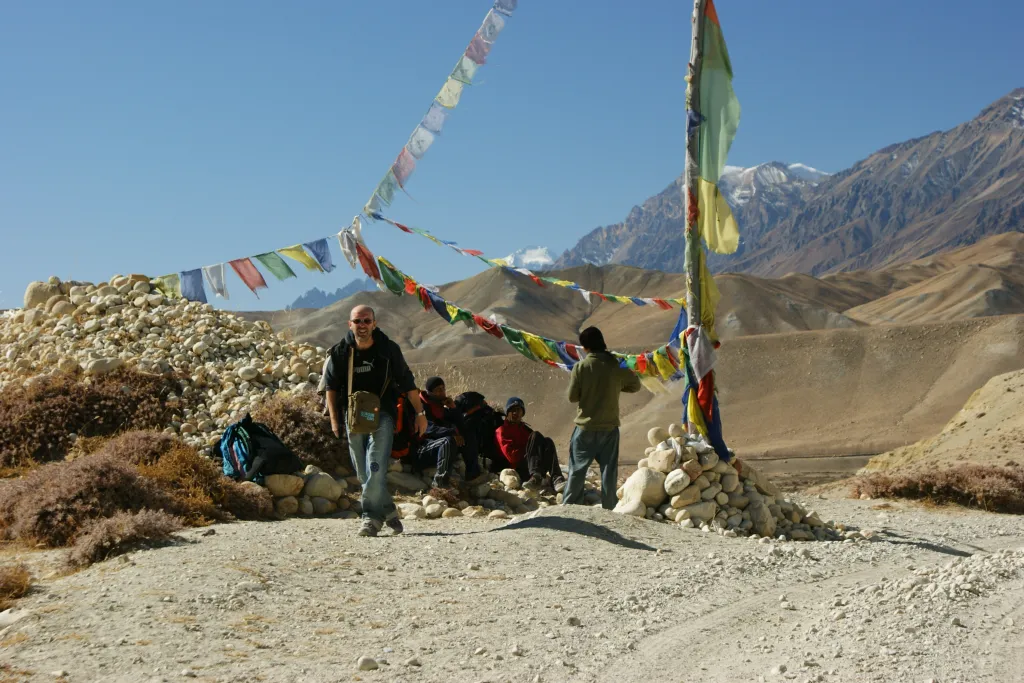
Mustang Trek in August
Mustang trek will be one of the most unexpected treks for many trekkers. The trekkers fly from Kathmandu to Pokhara to Jomsom airport above the deepest gorge in the world, Kali Gandaki Gorge which offers a high level of excitement and adventure. From Jomsom, the trail traces to Kagbeni and ascends to Nyi Pass (4,020m) before tracing to Dhamkar. The Lo Gekar monastery above Dhakmar is historically and culturally significant for the people of this region. Eventually, the trek finally concludes at Lo Mangthang, the hidden treasure of Lo Kingdom. The place is majestically encircled by the stone wall which has made this place distinct and hidden from outsiders. The Jhong Cave 10km above from Lo Manthang and the 600 years old Palace in the middle of Lo Manthang hold their own history, culture, and importance. These places are the must-visit a place of the Mustang trek.
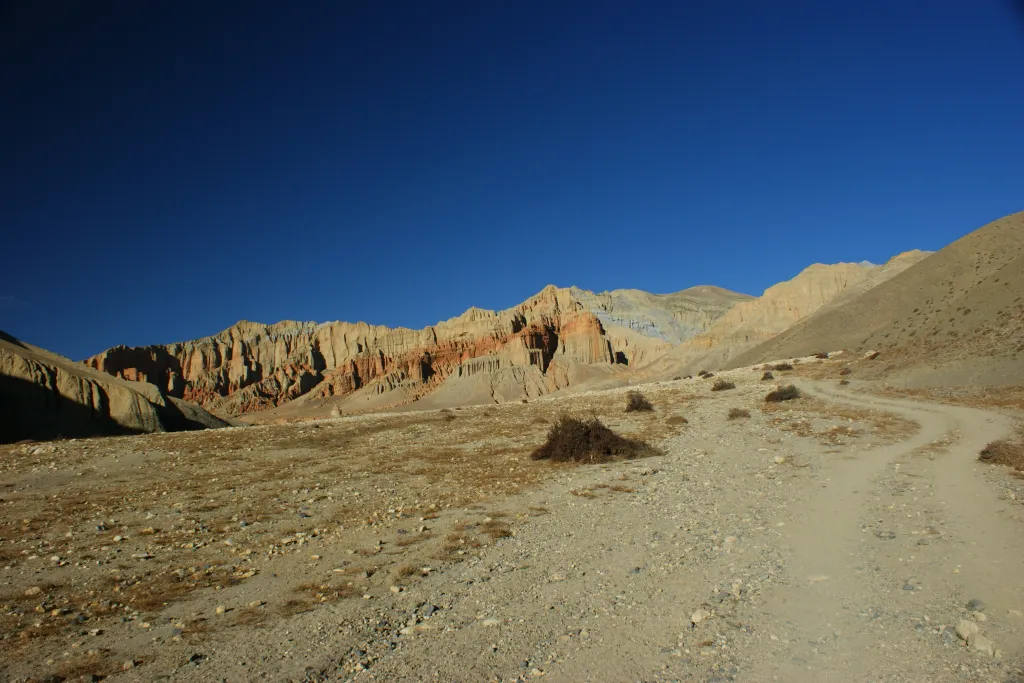
Upper Mustang
Mustang Trek is one of the easiest treks which can be accomplished by the trekkers of average physical stamina. The recent road connection up to Lo Manthang has made the place easily accessible to anyone. If any difficulties or misfortune happens on the way, one can hire the four-wheelers to reach Lo Manthang.
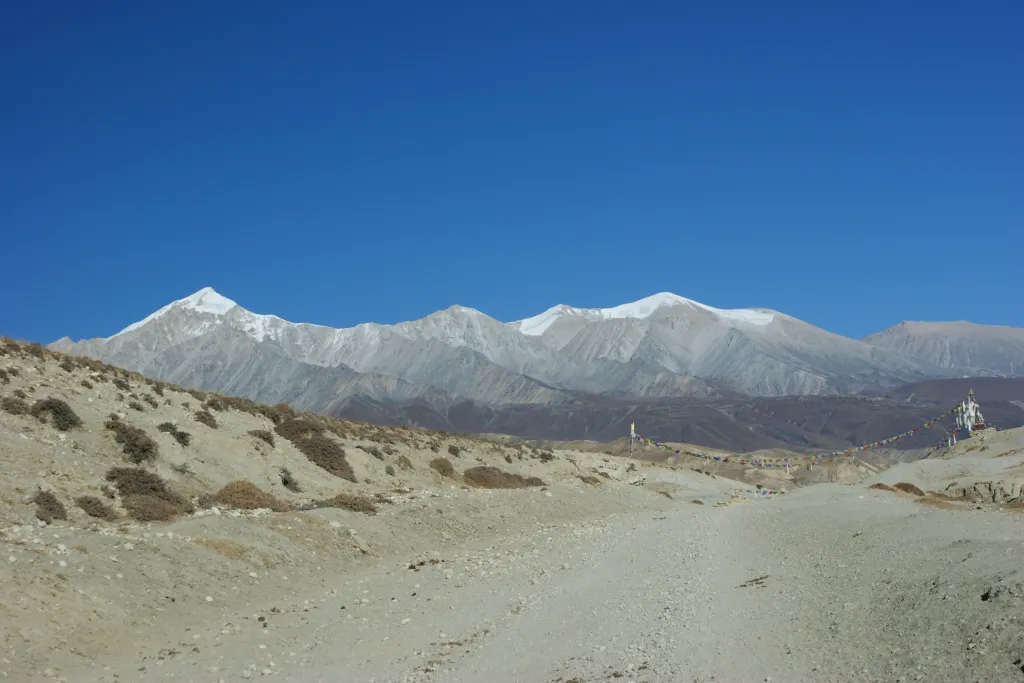
Annapurna Range from Upper Mustang
The trail encircles Upper Mustang Trail and drops down from Lo Manthang from where the trail concludes at Jomsom airport. Trekking into the Hidden Kingdom of Mustang resembles the Tibetan lifestyle and culture. The fiercely flapping sound of prayer flags, an echo of aesthetic monks’ hymn, sacred Gompas, modest and loyal villagers soothes the desperate soul and tiresome limbs of the trekkers.
Everest Three Passes Trek:
The Everest Region Three Passes Trek is Nepal’s top demanding trekking package. This trek is more challenging and adventurous which demands physical fitness and special gears as the trek covers the 4 valleys: Bhotekoshi, Gokyo, Khumbu and Imja Tse which includes Everest Base Camp, Gokyo lake and three passes above 5,000m. Everest Three Passes Trek is definitely the ultimate package to trek during Monsoon season as the high land is always protected by the rain shadow.
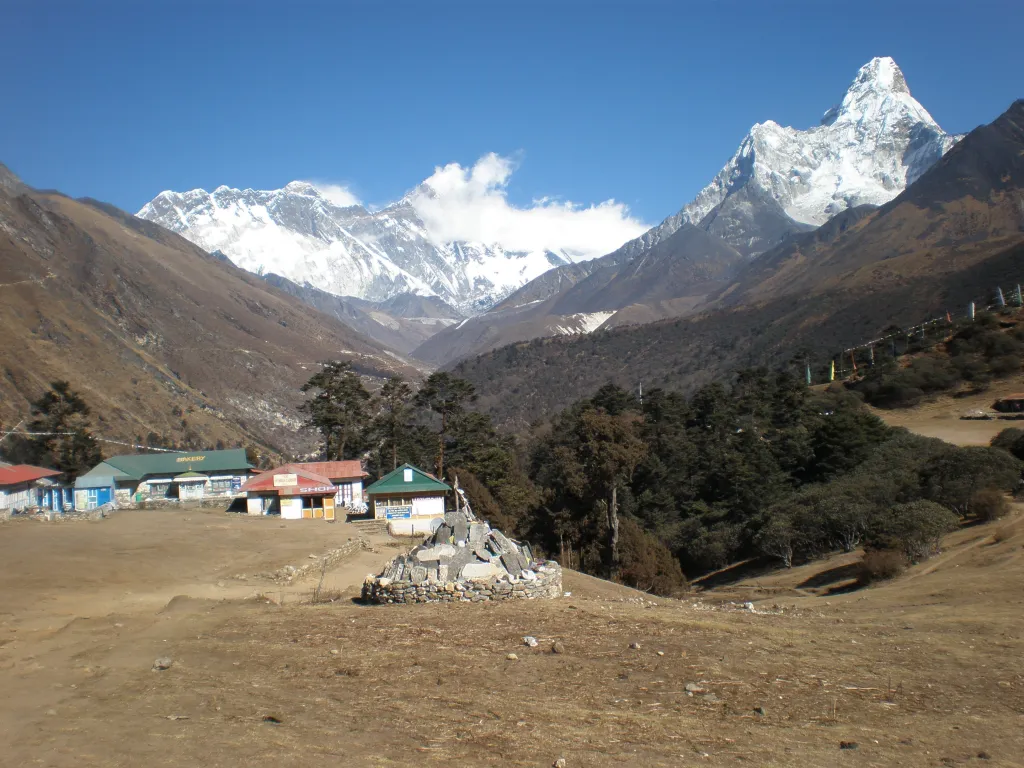
Mount Everest View from Tengboche
The trek commences with 30 minutes turbulent mountain flight From Kathmandu (TIA) to Lukla (Tenzing-Hillary airport); the gateway to Everest. Offering to relive the off beaten path trodden earlier by the Veteran climbers and trekkers like Tenzing-Hillary and various others. The trail traces through dense forest, rivers, suspension bridges, passes, moraines, lakes, stone cairn, etc. The trial marches further through Sagarmatha National Park which is the homage of the many rear animals like Musk deer, Himalayan Thar, Snow leopard, red panda Himalayan wolves, etc. Every Trekker must pay Park Entry Permit and Entrance Card to get permission for further trek. The forest journey below Namche seems irritating due to the risk of bugs, mosquitoes, and leeches. The lush vegetation, slippery trail, itchy sensation gives the ambivalent feeling.
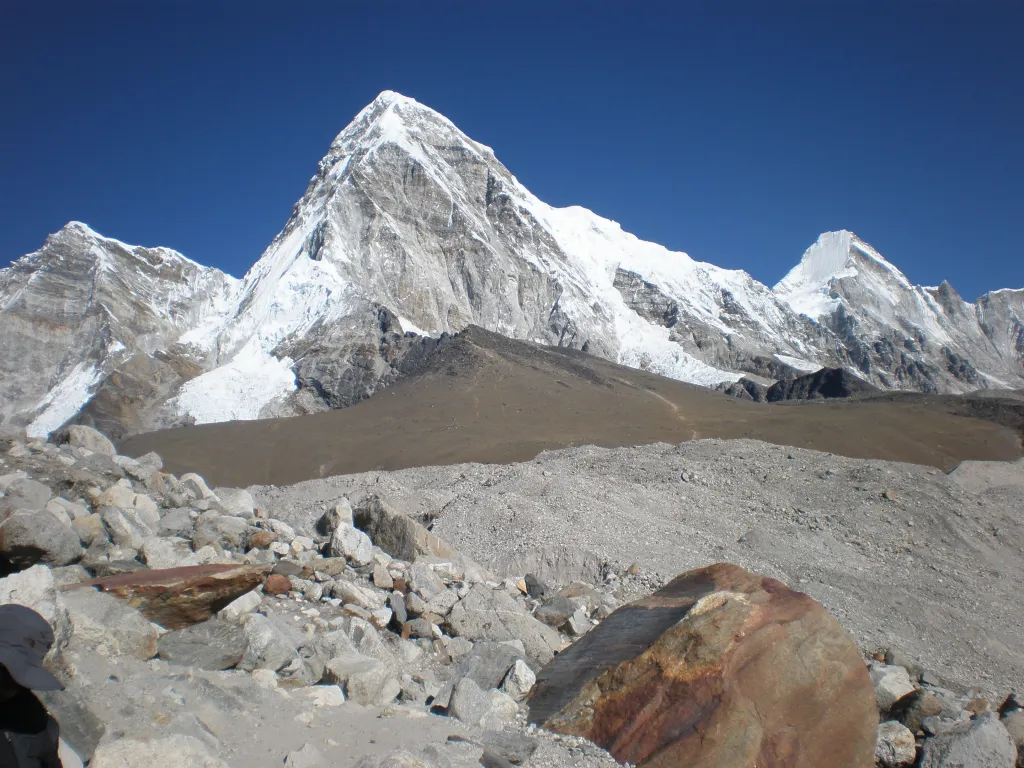
Everest Trek in July
Namche, the main tourist hub of the Everest region is the perfect stop for exploration and acclimatization. The Everest View Hotel above Namche offers the magnificent coruscating view of Mt. Everest, Mt. Khumbila, Ama Dablam, Lhotse and Mt. Thamserku. The trail from Namche follows the sacred village Tengboche which is a prominent place for Tengboche monastery. The Gompa is believed to have been built in the 18th century and looks like a palace in heaven majestically encircled amidst the mighty peaks: Taboche, Everest, Nuptse, Lhotse, Ama Dablam, and Thamserku.

Mount Everest Sun Set
After exploring Nangkartshang peak and Gompa during acclimatization day at the summer valley Dingboche, the trail ascends to Chhukung and continues towards the first pass Kongma La. The icy trail, wide basin, boulders makes the trek tough yet rewarding. The most difficult and challenging trail of the trek is descending from High camp above Kongla Pass to Lobuche. The trail to Gorakshep is also one of the roughest and tough trials which trace through narrow mountain gap, moraine alongside Khumbu glacier. Gorakshep was the original EBC in ancient time but these days it is a last human settlement which offers lodges and amenities to the trekkers and mountaineers.
The Base Camp of Everest remains less crowded and absolute tranquil as many trekkers don’t schedule EBC trek in Monsoon. From the Base Camp, The Khumbu icefall and Nuptse ridge can be perceived whereas The Everest is hidden. Almost all the trekking agencies offer short hike up to vantage point Kala Patthar for the gleaming vista of sunrise over Mt. Everest and a 360-degree view of the Himalayan range. From Gorakshep, the trail drops down to Dzongla offering the closeup view of Awi Peak and other towering peaks: Ama Dablam, Kangtega, Thamserku, Cholatse and several streams on the way.

From the village Dzongla, the trail descends down the basin and rises over the ridge before crossing Chola la Pass. Situated alongside Chola Glacier, the pass offers the magical view of mountain peaks: Ama Dablam, Cholatse, Kangchung peak. The route through Chola Pass is more challenging due to the narrow gorge and minefield of loose rocks underneath the ice. Ascending through the moraine glacier underneath Ngo Zumba Glacier, the trail leads to Longponga Tsho, Taujung Tsho and eventually Gokyo Tsho which is situated alongside the last human settlement of Three Pass Trek, Gokyo Valley.

World's Largest Khumbu Glacier
The other breathtaking highlight of the trek is hike to Gokyo Ri Peak (5,357m), the vantage point from where trekkers can perceive excellent view of Mt. Everest (8,848m), Mt. Makalu (8,481m) Cho Oyu, Lhotse, Cholatse, Taboche, moraine, Ngozumba glacier and many more. After enjoying the majestic and tranquil scenery from the summit, the trail drops through Sagarmatha National Park towards Thonak Tsho. Following the edge of the Rolwaling region, the trail traces Three Passes route towards Renjo La Pass crossing the zigzag path. The pass offers the gleaming vista of Everest, Makalu, Gyajung Thak, Tengi Ragi Tau, Himalayan range, and Rolwaling Range. Eventually, the trail drops down to Marlung, Namche and Lukla for the return flight.


